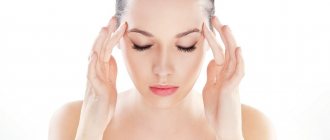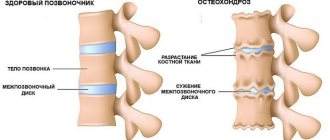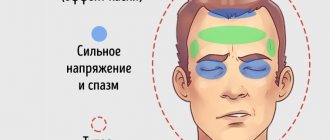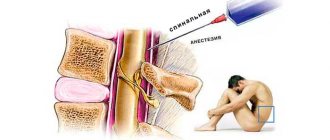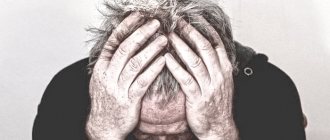HeadAdvice Migraine
Scientists, psychologists and doctors have long proven that negative experiences provoke the occurrence of many psychosomatic diseases, including such as migraine. A severe headache or migraine, which cannot be gotten rid of with medication alone, is familiar to every tenth person on Earth. It is known that many historical figures suffered from this disease, for example: Alexander the Great, Julius Caesar, Napoleon Bonaparte, writers F.M. Dostoevsky, M.A. Bulgakov, F. Kafka and the most famous psychologist Sigmund Freud.
Medical understanding
More often the pain occurs on one side of the head, less often the whole head hurts. In addition to headaches, this disease has other manifestations:
- nausea (urge to vomit);
- the level of vision decreases;
- appetite worsens;
- dizziness appears;
- irritability increases (especially to sound and light).
In the long term, if you do nothing, migraines can make life very difficult. In addition to periodic discomfort, it can lead to loss of ability to work. And migraine can actually turn into a stable deviation in physical condition.
Medicine recognizes that it is a neurological (persistent disorder) disease. The functioning of our brain is disrupted. They say the brain sends distorted (incorrect) signals. And why? Medicine does not reveal this.
Migraine: symptoms
The main manifestation of migraine is excruciating, unbearable pain, which is localized mainly in one half of the head. The pain is felt inside the skull, but even touching the skin at the site of the pain causes unbearable painful sensations. Some patients describe the attack as follows: a red-hot pin that turns in the head from time to time.
Classic migraine (with aura) is manifested by the following symptoms:
- any sounds and light are intolerable;
- nausea, which often turns into vomiting;
- weakness and drowsiness;
- disturbance of visual perception - fiery figures or flashes pop up in the field of vision.
All symptoms - except pain - disappear within an hour.
Migraine without aura has similar symptoms:
- weakness;
- intolerance to light and loud sounds;
- nausea with vomiting;
- pain.
With a migraine, the pain continues for several days and intensifies with the slightest physical activity. All the patient needs during an attack is to remain alone in a quiet, dark room and lie down, waiting for it to end.
Provoking factors and risk group
Headache often occurs in a situation of overwhelm at the mental, psycho-emotional level. Through a headache, it is relieved; it is a reflection of feelings that are suppressed by a person.
Headache is often associated with a feeling of guilt and is perceived as a punishment for it. Pain caused by psychosomatics often causes tension and anxiety, and against this background the perception of it becomes even more painful.
The trigger for a headache may be conflict or emotional trauma. A psychosomatic reaction in the form of pain in the head can be the result of emotional stress caused by strong excitement or worry. Depression can trigger headaches. It occurs especially often in cases of masked or hidden depression.
Overload at work, imbalance between work and rest, and lack of proper sleep can cause headaches. After work, especially associated with large flows of information or high responsibility, brain overload and the resulting tension through headaches signal a person about the need to reduce it, reduce the load on the brain.
Situations when a person remains in a state of hostility, anger for a long time, is very offended by someone, negative emotions find a way out in headaches. Experts believe that it is precisely such circumstances that often provoke migraines.
No less dangerous is the conflict that arises if a person does not feel sufficient recognition of his importance and constantly compares himself with people who have achieved greater social success. Constant dissatisfaction with oneself and frustration trigger the mechanism of psychosomatic headaches.
Causes
To date, the reasons that provoke attacks of hemicrania continue to be studied. Scientists have determined that there is a hereditary predisposition. Migraine is transmitted through the female line, which explains the more frequent registration of cases of diagnosis in women. Men suffer from the disease less often. Women inherit the characteristics of the nervous system. According to scientists, they are one of the causes of headaches under a number of circumstances.
It is believed that the mechanism of pain in this case is associated with the trigeminal nerve, or more precisely, with the activation of its nucleus. As a result, first there is a spasm of cerebral vessels, and then their expansion and pervascular edema. Also, impaired serotonin metabolism in the central nervous system is involved in the appearance of migraine-type pain.
Predisposition to migraine is not a direct cause of the development of pathology. The process is started by triggers - specific factors that are conventionally divided into four groups:
But the predisposition itself may not manifest itself in any way without the influence of certain factors, the so-called triggers. They can be divided into four groups.
- Physiological reasons: overwork, sleep disturbances, hormonal imbalance.
- Psychological causes of migraine: stress, excessive emotional and mental stress.
- Food: tyramine, contained in some foods (chocolate, cheese, coffee, cocoa, nuts, citrus fruits, smoked foods), can provoke migraine pain. Alcohol – low-alcohol drinks – is a powerful trigger. Champagne, wine.
- External factors: too loud voices, sounds, bright lights, strong aromas, rapid changes in atmospheric pressure, staying in stuffy small rooms.
Migraine: psychosomatics of the disease, opinions of Louise Hay and Liz Burbo
Let's consider another approach to this problem. The psychosomatics of migraine are explained by the retention of negative emotions and the following of incorrect behavior patterns. From her point of view, we ourselves create the conditions for the emergence of such a state.
The peculiarity of their behavior is that they direct aggression from accumulated feelings towards themselves. Those. they do not try to free themselves from anger, fear, resentment. guilt, etc. releasing them into the outside world. They blame themselves and this is the main problem.
Troubles in life are perceived as one’s imperfections. And this is a clear low self-esteem and a manifestation of self-dislike. As a result, the accumulated negativity finds the weakest point in the body. In such people it turns out to be the brain.
Impaired serotonin control, inflammation, heredity... All of these factors can cause a migraine attack. Migraine is the result of a disorder present in the body. But the fact that the cause of the disease lies in the soul will seem interesting to many.
Judge for yourself. Do you know a happy, balanced person living the life he wants who suffers from this disease? Migraine, the psychosomatics of which includes internal tension, should be considered as a broader problem than a brain disorder.
Consequences
In the chronic stage of psychosomatic disorders, the patient may develop :
- Problems of personality development. Anomalies of mental development are unconscious. They manifest themselves due to prolonged emotional stress. Cause the formation of neurotic disorders.
- Painful experiences. Patients develop hostility, feelings of resentment, and angry states. A person withdraws from the outside world. He becomes unsociable, angry, and emotionally unhealthy.
- Dystrophic conditions. They begin to burden the patient in any life situations. Sleep problems begin. Hostility is formed.
- Psychosomatic symptoms. They cause endogenous psychoses, the development of schizophrenia, the occurrence of hallucinations, states of delirium, states of alienation, personality disorders, and loss of sense of reality.
How to get rid of psychosomatic cephalgia
First aid in the fight against severe cephalgic syndrome can be provided by medications, primarily analgesics. But this is a temporary measure. If attacks of pain are not a consequence of a somatic illness, but are of a psychosomatic nature, it is necessary to analyze the person’s internal conflicts.
It is unlikely that you will be able to do this on your own; it is better to turn to a qualified psychologist for help. The specialist will analyze the current situation that has affected the physical and emotional state, and will help the patient come to an understanding of the reasons that led to discomfort.
Find the answer to the question of what exactly the subconscious is trying to achieve by causing pain. For example, the body gives a signal that it needs rest. Or in this way he reacts to a meeting with an unpleasant person, to an activity that he does not want to engage in.
Build a strategy that will help you act correctly in certain situations. Its use will help you get rid of tension and pain that it provokes.
Psychotherapy
Psychotherapy touches and dismantles these layers more deeply. For example, you understand that you often act within the framework of imposed norms. But how to overcome these limits and learn to live happily is already work that is better to begin under the supervision of a specialist - a psychologist or psychotherapist.
Psychotherapy is especially indicated in sensitive situations. For example, understanding overprotection on the part of one of the parents can cause a strong negative reaction if the second parent indicates this as the cause of the child’s pain. A person must come to this himself. After all, overprotection also does not come out of nowhere; it is a consequence of the personal problems of adults. That's why. In this case, it is better for everyone to come to a family consultation together.
Also very personal are cases when migraines are provoked by sexual dissatisfaction or, indeed, by status that must be protected from ill-wishers and competitors. In this case, a specialist is also needed.
In general, psychotherapy involves verbalizing those experiences that are triggers for headaches and working to rebuild the strategy that can provoke them.
Author of the article: Galina Nikolaevna Lapshun, Master of Psychology, I category psychologist
Valery Sinelnikov
Doctor, writer, founder of the “Health and Joy” school. His theory of heart disease also rests on a lack of love. First of all, to yourself, then to your loved ones, and then to the world and life in general. Many people do not know how to love themselves, and old grievances, jealousy, fear, anger, etc. prevent them from loving others.
According to Sinelnikov, the manifestation of pity and compassion also leads to complications in the functioning of the heart. Because in this case the person seeks to take on the pain of another. Thus, he forgets about himself, and his main organ is again left without love. The right thing to do is to show mercy.
Failures in the functioning of the heart indicate that a person has switched to a rhythm of life that is unusual for him. Haste and bustle gradually crowd out significance and prudence from consciousness, replacing them with anxiety and apprehension. And, as a result, self-esteem decreases, and along with it, love disappears.
He believes that the psychosomatics of migraine are similar to ordinary headaches. A predisposition to neurotic manifestations of character (due to psychological trauma) is simply added.
People who strive to achieve perfection (perfectionists) are susceptible to the appearance of this disease. But on the way to him, all failures are attributed to oneself. They constantly criticize and blame themselves. And the worst thing is that they punish themselves for mistakes.
Dizziness in psychosomatics
From a psychosomatic point of view, dizziness is interpreted as a loss of stability and balance in space, which in some cases reflects the state of the body as a whole. Your head may feel dizzy due to:
- change of place of work or residence;
- the beginning of a new relationship or the end of an old one;
- experiencing the death of someone close to you;
- the need to make a significant decision.
All these situations cause stress, and also include an element of novelty and uncertainty, so a person reacts to them in approximately the same way.
Prevention measures
In order to get rid of headaches caused by psychosomatics, you must first of all adhere to the rules of a healthy lifestyle. It is necessary to go to bed on time and rest for a sufficient time, change the diet by removing harmful foods from it and adding fruits, vegetables, and cereals.
To overcome cephalalgia, you don’t need to keep your emotions to yourself. The negativity accumulated inside will lead to a deterioration in well-being. Both crying and screaming can help get rid of it. Of course, it is not necessary to do this publicly; you can give free rein to your emotions at the right moment in the right place. Walking and playing sports help relieve stress.
Positive emotions will help get rid of the problem. You should try to do everything that lifts your spirits more often. For some, this is a hobby, going to the movies or exhibitions, shopping, meeting friends. The main thing is to remember that self-control and working on oneself can change habits, attitudes towards life’s difficulties and relieve psychosomatic pain.
The connection between headaches and psychosomatics
There is a deeper reason behind the illnesses:
- A boundary that urgently needs to be established.
- The truth that is not spoken about.
- An impulse that is restrained.
- A dream that didn't come true.
Through illness, the body forces a person to rest and relax. Psychosomatic headaches provide time to restore internal balance. You can determine whether a disease is a consequence of psychosomatic causes:
- according to the consequences: the painful condition passes, but there is a feeling of fatigue and a desire to rest;
- according to symptoms: heaviness, tension in the neck, sensations of pressure in the temples.
Psychosomatics are often a sign of a hopeless situation or internal conflict.
How to cope with psychosomatics faster
Two points are important: getting to the exact cause and choosing the right psychological techniques. If you break down all the work into stages, then it would be more advisable to go this way:
- determine the initial situation,
- specify the root emotion (anger, guilt, shame, grief - each has its own),
- select appropriate psychological techniques,
- check the correctness of their implementation,
- adjust the emotion (develop new reactions to provocations).
Moreover, you can take the first step to find the cause today. To do this, take our test:
Take the test
Example : you can read for a long time about constipation - that these are mental blocks, dislike for yourself. But in 95% of cases it appears in a state of choice, in limbo. If you have basic mistrust and anxiety, constipation becomes chronic and worsens during the period of choice.
Consequently, situations with choice will never end, but the attitude towards them can be changed using psychotherapeutic methods.
What do the majority do?
They study the theory, but do not achieve improvement.
The fact is that working independently with your unconscious requires a lot of preparation.
Do you need a specialist?
It will just be faster with him. It’s possible to cope on your own, but only a few can do it and it takes a long time.
In my practice, the time frame varied from 1 consultation to a year. The most common cases are:
- headache,
- Gastrointestinal tract,
- gynecological problems,
- lungs,
- childhood illnesses through parents and others.
You can find out about working with me here. Moreover, the psychosomatics of headaches are quite amenable to work and correction.
I wish you health and psychological comfort.



